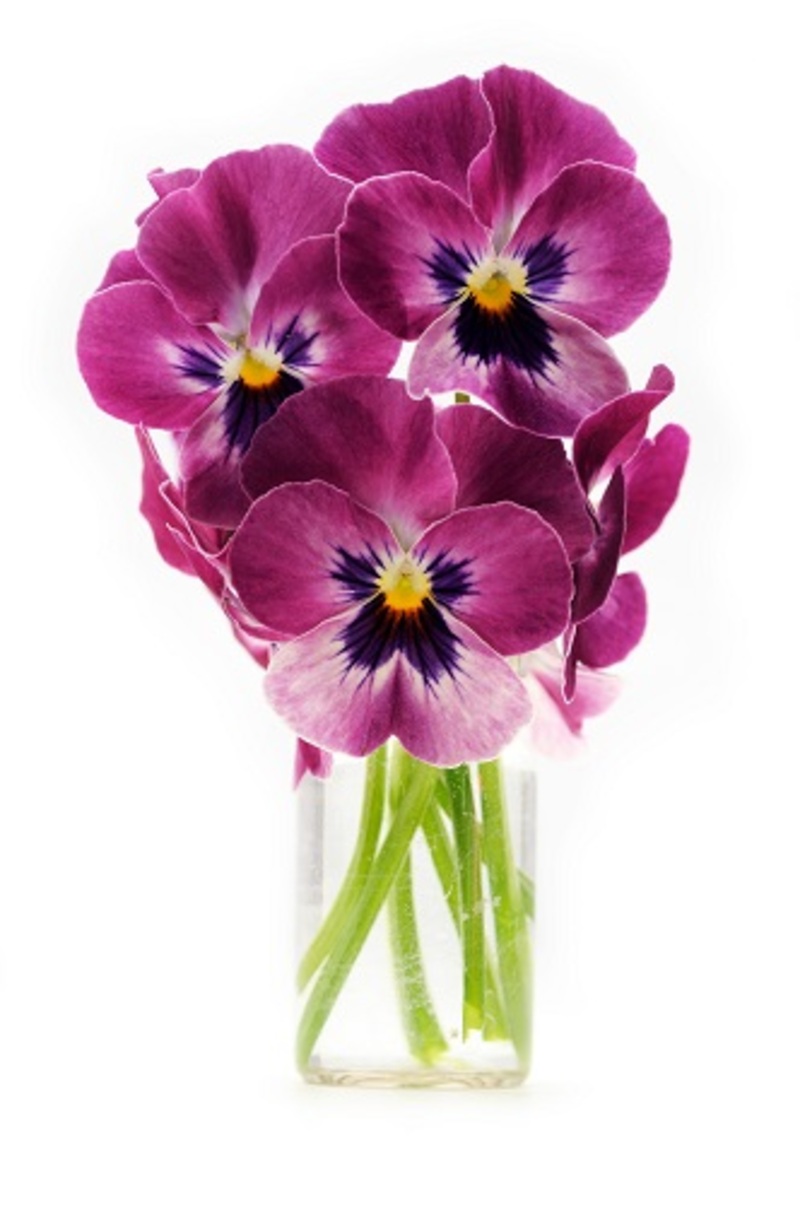Tulip Trivia: 7 Insightful Facts You Won't Want to Miss
Posted on 24/08/2025
Tulip Trivia: 7 Insightful Facts You Won't Want to Miss
Tulips, with their timeless beauty and vibrant spectrum of colors, have long captured the hearts and imaginations of people worldwide. But beyond their delicate petals lies a world rich with interesting tulip facts, surprising history, and botanical wonders. If you're looking to delve deeper into the world of this magnificent flower, here are seven essential tulip trivia facts that will transform how you see these famous blooms.

1. Tulip Origins: A Journey from the Wilds of Central Asia
When you picture tulips, the iconic images of Dutch landscapes awash in colorful rows may come to mind. However, the origin of tulips lies much farther east. Tulips are native to Central Asia, particularly the mountainous regions of Kazakhstan, Uzbekistan, and Kyrgyzstan. These regions are home to the wild ancestors of today's cultivated varieties.
The early tulip history tells us that nomadic Turks were some of the first to cultivate and appreciate these flowers, long before they became synonymous with Dutch culture. It wasn't until the 16th century that tulips made their way to Europe, forever transforming Western horticulture and art.
Keywords Variations:
- tulip origins
- history of tulips
- where are tulips from
2. Tulip Mania: The World's First Economic Bubble
Among fascinating tulip trivia is the tale of Tulip Mania -- considered by many historians as the world's first speculative bubble. In the early 1600s in the Netherlands, tulip bulbs became so highly coveted that their prices soared beyond all reason, with rare varieties fetching sums greater than the price of a house.
The bubble inevitably burst around 1637, causing an economic collapse that rippled across Dutch society. Despite causing financial ruin for some, Tulip Mania cemented the flower's status as an enduring symbol of beauty and extravagance.
Tulip Economic Facts:
- Some single tulip bulbs cost the equivalent of luxury homes during the peak of Tulip Mania.
- The phenomenon is often used as an example in economic textbooks to illustrate speculative bubbles.
- The craze was fed by the introduction of "broken" tulips, which displayed unique striped or flamed colors--actually the result of a virus!
3. Tulip Varieties: Over 3,000 and Counting
Did you know there are more than 3,000 registered tulip varieties? With new hybrids added almost every year, the diversity of tulips is staggering. These varieties are divided into fifteen official groups, including species tulips, single late, double early, Darwin hybrids, fringed, parrot, and more.
Each group boasts its own unique characteristics, from petal shape and color patterns to blooming time and stem length. Whether you favor classic cup-shaped blooms or the feathery edges of a parrot tulip, there's a tulip for everyone!
Popular Tulip Varieties:
- 'Queen of Night': Known for its deep purple, almost-black hue.
- 'Apricot Parrot': Vibrant with frilled petals in shades of apricot and green.
- 'Red Emperor': An iconic early-blooming Darwin hybrid, bold and bright.
- 'Angelique': A luxurious double-flowered peony tulip, soft pink and romantic.
4. Symbolism of Tulips: More Than Just Beauty
Tulips carry deep symbolic meanings in cultures around the world. Their associations extend far beyond aesthetics, often representing perfect love, rebirth, charity, and even royalty. The meaning of a tulip can shift depending on its color:
Color Meanings of Tulips:
- Red Tulips: Stand for true love and passion
- Yellow Tulips: Once a symbol of hopeless love, now more commonly represent cheerfulness
- Purple Tulips: Royalty and admiration
- White Tulips: Forgiveness, respect, and purity
- Pink Tulips: Affection, joy, and good wishes
- Orange Tulips: Energy and enthusiasm
In the Ottoman Empire, tulips were considered a symbol of paradise on earth, gracing everything from palace gardens to intricate ceramic tiles. Today, many still exchange tulips as a sign of friendship and admiration during springtime festivities.
5. Tulip Festivals: Celebrating Spring Around the Globe
No list of tulip trivia would be complete without mentioning the flourishing tradition of tulip festivals. Each year, countries across the globe celebrate the arrival of spring with spectacular displays of tulip blooms. These festivals attract millions of visitors, eager to immerse themselves in fields bursting with color.
Notable Tulip Festivals:
- Keukenhof Gardens, Netherlands: Known as the "Garden of Europe," Keukenhof showcases over 7 million tulip bulbs each spring.
- Canadian Tulip Festival, Ottawa: This festival commemorates Canada's historic bond with the Netherlands and the annual gift of tulip bulbs.
- Skagit Valley Tulip Festival, USA: Washington State's rolling tulip fields attract flower lovers from around the world.
- Istanbul Tulip Festival, Turkey: A beautiful nod to tulip's Ottoman roots, held in vibrant city parks.
These festivals not only highlight the beauty and diversity of tulips, but also honor their historical significance and global appeal.
6. Fascinating Tulip Botany: Science Behind the Beauty
What makes tulips so enduring and adaptable? Tulip plants are classified as perennials, sprouting anew from bulbs each season. These bulbs store nutrients, enabling the tulip to survive even in harsh climates.
Unique Botanical Facts:
- Tulip flowers close at night or during cold weather, and reopen when conditions are favorable--a process known as "nyctinasty."
- The vivid color patterns found on some tulip petals are caused by a harmless virus called the Tulip breaking virus.
- Tulip bulbs contain natural toxins that deter most pests and rodents, making them resilient in gardens.
- Although tulips are perennials, many cultivated varieties are best treated as annuals since their vigor can decline over time.
Fun fact: Tulip petals are edible! While not commonly used in modern cuisine, during wartime shortages, tulip bulbs and petals were sometimes consumed as emergency food. Some chefs now experiment with tulip petals as a vibrant garnish for salads and desserts.

7. The Tulip's Place in Culture and Art
Throughout history, tulips have inspired artists, poets, and designers around the globe. The flower's elegant form appears in Ottoman art, Dutch still-life paintings, Persian poetry, and modern graphic design.
Examples of Tulip Influence in Culture:
- Ottoman Period: Tulips were a symbol of abundance, often seen in palace architecture and textiles.
- Dutch Golden Age: Artists such as Rembrandt and Jan Brueghel the Elder immortalized tulips in still lifes, emphasizing both their beauty and their role in the era's economic history.
- Contemporary Art: Tulip motifs are widely used in home decor, fashion, and jewelry, speaking to their lasting popularity.
- Language and Literature: In Turkish and Persian poetry, tulips are metaphors for ephemeral beauty and love.
The powerful symbolism and striking visuals of tulip flowers continue to make them a favorite subject for creative minds worldwide.
Conclusion: Tulips Are So Much More Than Meets the Eye
Whether you're an avid gardener, a lover of fine art, or simply captivated by the elegance of spring blooms, the humble tulip offers an endless source of wonder. From its wild origins in the heart of Central Asia to its starring role in global economic history and art, the tulip's story is as colorful and layered as its petals.
We hope these seven insightful tulip facts have deepened your appreciation for this extraordinary flower. The next time you stroll past a bed of blooming tulips or receive a vibrant bouquet, remember the rich legacy, remarkable diversity, and fascinating science that the world's favorite flower holds within its gentle cup.
Want to learn more about tulips?
- Explore local botanical gardens or flower festivals.
- Try planting a mix of tulip varieties in your own garden for stunning spring color.
- Read up on the history of the tulip trade and its cultural significance.
Tulips are truly a testament to the marvels of nature, human creativity, and cultural connection. Happy tulip season!
Latest Posts
Tulip Trivia: 7 Insightful Facts You Won't Want to Miss
Retain the Beauty of Your Flowers with These 3 Simple Methods
Create Calming Spaces with Hassle-Free Office Plants







